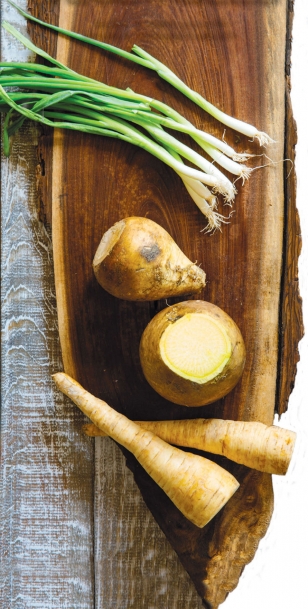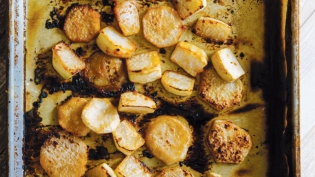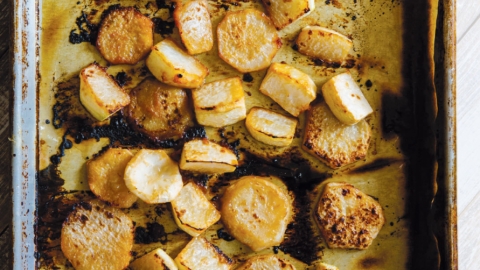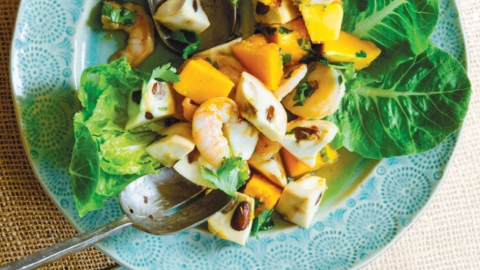Underrated Winter Vegetables
Have you ever signed up for a seasonal produce box only to get some very strange-looking vegetables come winter? Is this a carrot or a turnip? (Parsnip)
What is that bulbous thing with alien protrusions? (Kohlrabi)
Are we supposed to eat these brown, grey and purple-y root things? (Rutabaga)
What about this fruit that looks like a combination of an artichoke and a dragon egg? (Cherimoya)
Inherent in joining a community-supported agriculture (CSA) harvest subscription program is exposure to unusual, or downright weird, produce in season. While these vegetables may not have originated in Ventura County, they are quickly becoming a winter feature in local farmers’ markets. Knowing what they are and their flavor profiles can help even the inexperienced cook expand both palate and repertoire.
Parsnips have a complex flavor profile. They are root vegetables, sweet and similar to carrots, but contain more starch and have a complex earthy, nuttier taste. Before cane sugar, parsnips were often used as a sweetener. Introduced to North America by European colonists, they were largely replaced by the potato by the mid-19th century. Now finding popularity as an alternative starch, parsnips are often seen with roasts and winter side dishes and are a great source of potassium.
Rutabagas are a hybrid cross between turnips and cabbage, and this is evident in their flavor. The taste is buttery and sweet-savory when cooked. First referenced in 17th century Sweden, where they were found growing wild, they served well during food shortages, leaving some unpleasant associations historically. Interestingly, some people who find it bitter have a genetic sensitivity to some of the rutabaga’s chemical makeup, but for most, the mild starch is a pleasant way to get a little extra vitamin C.
Cherimoya is considered a neotropical fruit, growing natively in South America and the Caribbean and, remarkably, cultivated successfully in Southern California. Nicknamed “custard apple” for its soft, non-gritty pear-like smooth flesh, the cherimoya has a tropical fruity flavor that has garnered acclaim as a “masterpiece of nature.” Like an avocado or a pear, it’s ripe when generally firm with slight give when gently squeezed. The seeds are highly toxic when crushed, but the flesh is an excellent source of vitamins B6 and C and dietary fiber.
The odd-looking green or purple kohlrabi is a cool-season crop with a taste and texture similar to broccoli stems or cabbage, but slightly milder and sweeter. It is equally tasty eaten raw, roasted or steamed and is high in nutrients and low in calories. The word kohlrabi is German for “cabbage turnip” (kohl as in coleslaw, and rübe for turnip) though it is not a root vegetable.
Enjoy the following recipes, by Chef Robin, as some great examples of how these unfamiliar foods can quickly become family favorites.














